Higher classification Poison hemlock | Subfamily Apioideae Scientific name Conium maculatum Rank Species | |
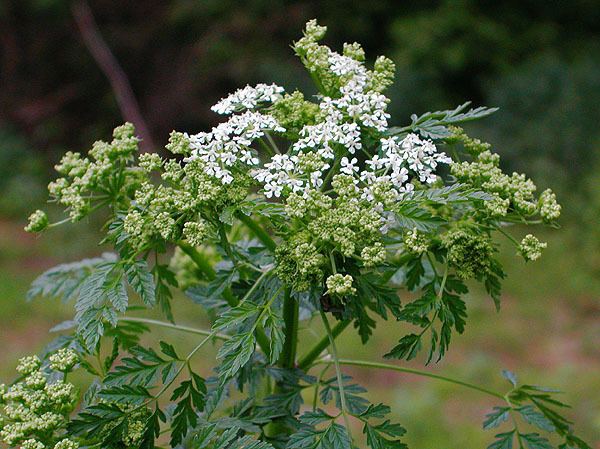 | ||
Similar Poison hemlock, Cicuta virosa, Cicuta, Hyoscyamus niger, Wolf's bane | ||
Poisonous plants 1 2 1 conium maculatum poison hemlock
Conium maculatum (hemlock or poison hemlock) is a highly poisonous biennial plant herbaceous flowering plant in the carrot family Apiaceae, native to Europe and North Africa.
Contents
- Poisonous plants 1 2 1 conium maculatum poison hemlock
- Conium maculatum poison hemlock deadly
- Name
- Description
- Distribution and ecology
- Biochemistry of the alkaloid toxins
- On other animals
- Isolation of the alkaloids
- References
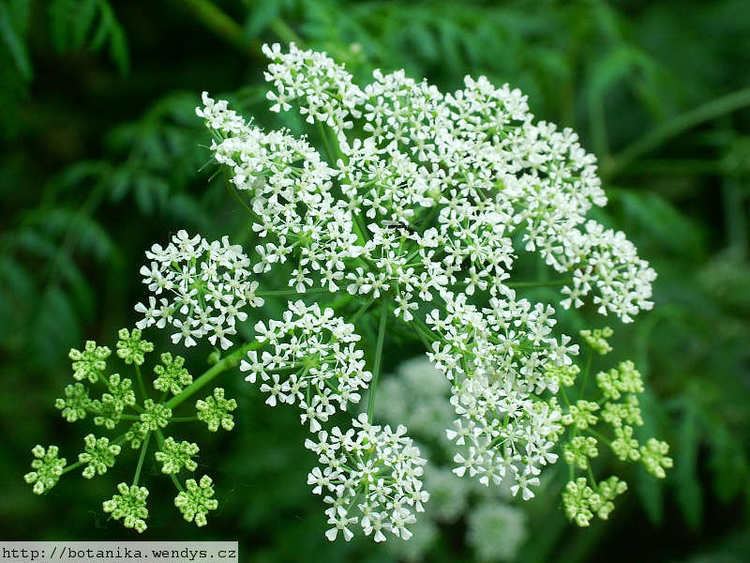
Conium maculatum poison hemlock deadly
Name
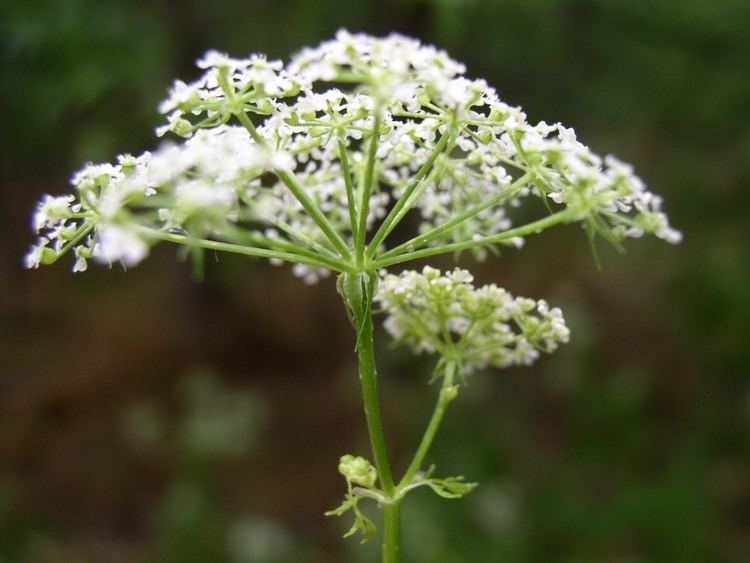
Conium maculatum is known by several common names. In addition to the English poison hemlock, the Australian Carrot Fern, and the Irish devil's bread or devil's porridge, poison parsley, spotted corobane, and spotted hemlock are used. The plant should not be confused with the coniferous tree Tsuga, also known by the common name hemlock even though the two plants are quite different. The dried stems are sometimes called kecksies or kex.
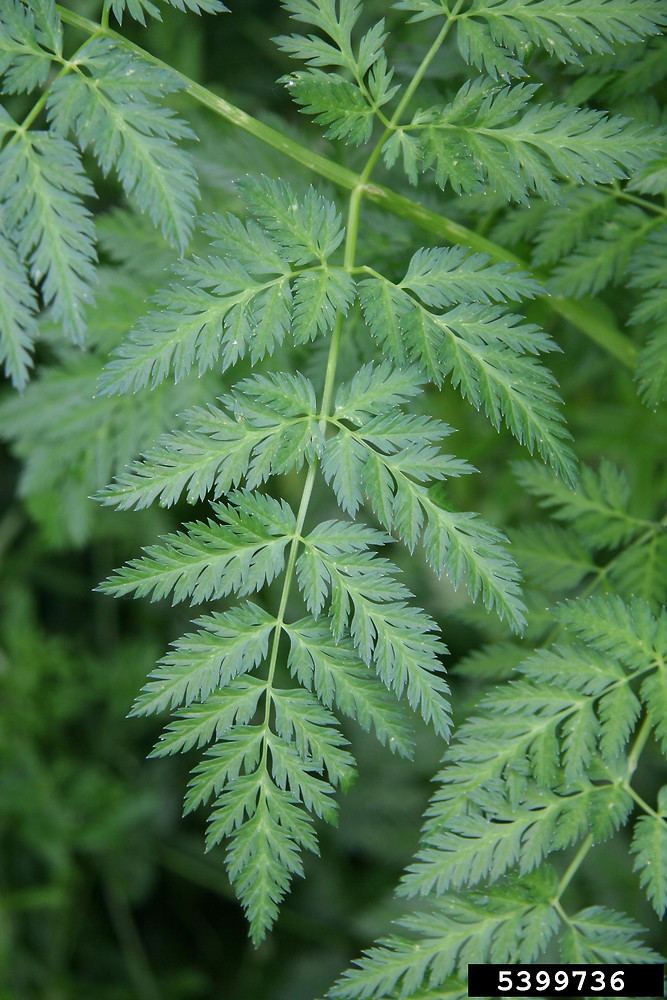
Conium comes from the Greek konas (meaning to whirl), in reference to vertigo, one of the symptoms of ingesting the plant.
Description

Conium maculatum (hemlock, poison hemlock) is a herbaceous biennial flowering plant in Apiaceae, the carrot family, that is native to Europe and North Africa. It grows to 1.5–2.5 m (5–8 ft) tall, with a smooth, green, hollow stem, usually spotted or streaked with red or purple on the lower half of the stem. All parts of the plant are hairless (glabrous); the leaves are two- to four-pinnate, finely divided and lacy, overall triangular in shape, up to 50 cm (20 in) long and 40 cm (16 in) broad. The flowers are small, white, clustered in umbels up to 10–15 cm (4–6 in) across. When crushed, the leaves and root emit a rank, unpleasant odor often compared to that of parsnips. It produces a large number of seeds that allow the plant to form thick stands in modified soils.
Distribution and ecology
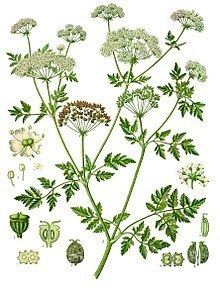
Conium maculatum is native in temperate regions of Europe, West Asia, and North Africa. It has been introduced and naturalised in many other areas, including Asia, North America, Australia, and New Zealand. It is often found on poorly drained soils, particularly near streams, ditches, and other surface water. It also appears on roadsides, edges of cultivated fields, and waste areas. It is considered an invasive species in 12 U.S. states.
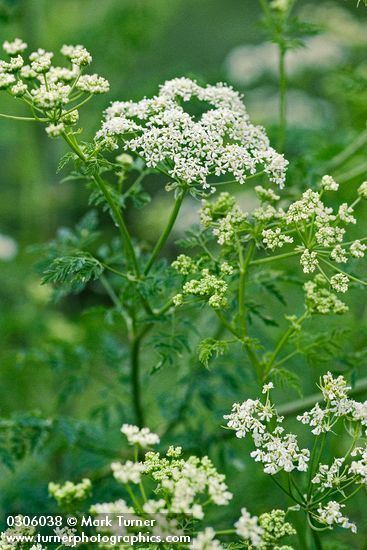
Conium maculatum grows in damp areas, but also on drier rough grassland, roadsides, and disturbed ground. It is used as a food plant by the larvae of some Lepidoptera species, including silver-ground carpet. Poison hemlock flourishes in the spring, when most other forage is gone. All plant parts are poisonous, but once the plant is dried, the poison is greatly reduced, although not gone completely.
Biochemistry of the alkaloid toxins
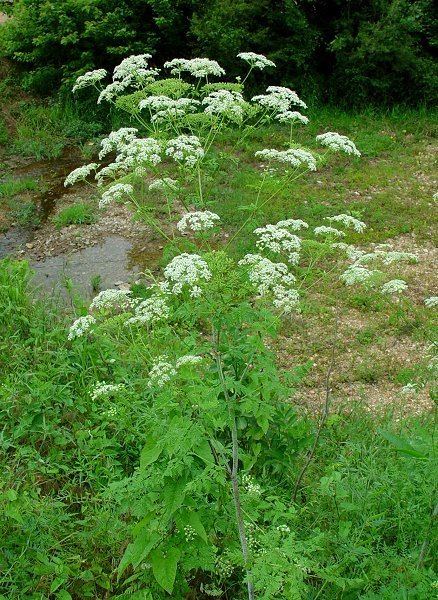
Conium contains the piperidine alkaloids coniine, N-methylconiine, conhydrine, pseudoconhydrine, and gamma-coniceine (or g-coniceïne), which is the precursor of the other hemlock alkaloids.
Coniine has a chemical structure and pharmacological properties similar to nicotine, and disrupts the workings of the central nervous system through action on nicotinic acetylcholine receptors. In high enough concentrations, coniine can be dangerous to humans and livestock. Due to high potency, the ingestion of seemingly small doses can easily result in respiratory collapse and death. Coniine causes death by blocking the neuromuscular junction in a manner similar to curare; this results in an ascending muscular paralysis with eventual paralysis of the respiratory muscles which results in death due to lack of oxygen to the heart and brain. Death can be prevented by artificial ventilation until the effects have worn off 48–72 hours later. For an adult, the ingestion of more than 100 mg (0.1 gram) of coniine (about six to eight fresh leaves, or a smaller dose of the seeds or root) may be fatal.
On other animals
Conium maculatum is poisonous to animals. In a short time, the alkaloids produce a potentially fatal neuromuscular blockage when the respiratory muscles are affected. Acute toxicity, if not lethal, may resolve in the spontaneous recovery of the affected animals provided further exposure is avoided.
It has been observed that poisoned animals tend to return to feed on this plant. Chronic toxicity affects only pregnant animals. When they are poisoned by C. maculatum during the fetus' organ formation period, the offspring is born with malformations, mainly palatoschisis and multiple congenital contractures (MCC; frequently described as arthrogryposis). Chronic toxicity is irreversible and although MCC can be surgically corrected in some cases, most of the malformed animals are lost. Such losses may be underestimated, at least in some regions, because of the difficulty in associating malformations with the much earlier maternal poisoning.
Since no specific antidote is available, prevention is the only way to deal with the production losses caused by the plant. Control with herbicides and grazing with less susceptible animals (such as sheep) have been suggested. C. maculatum alkaloids can enter the human food chain via milk and fowl.
Isolation of the alkaloids
Of the total alkaloids of hemlock isolated by the method of Chemnitius and fractionally distilled, the portion boiling up to 190 °C (374 °F) contains most of the coniine, gamma-coniceine and N-methylconiine, while conhydrine and pseudoconhydrine remain in the higher boiling residues. For the separation of coniine from coniceine, Wolffenstein recommends conversion into hydrochlorides. These are dried and extracted with acetone, which dissolves coniceine hydrochloride, leaving the coniine salt, from which the base may then be regenerated. For final purification, the coniine is converted into the D-hydrogen tartrate. It is sometimes necessary to start crystallisation by adding a crystal of the desired salt. Von Braun distills the crude mixed alkaloids until the temperature rises to 190 °C (374 °F), benzoylates the distillate, extracts the tertiary bases by shaking an ethereal solution with dilute acid, pours the concentrated ethereal solution into light petroleum to precipitate most of the benzoyl-δ-aminobutyl propyl ketone formed by the action of benzoyl chloride on coniceine, distills the solvent from the filtrate and collects from the residue the fraction boiling at 200–210 °C (392–410 °F)/16 mmHg (2.1 kPa), which is nearly pure benzoylconiine (bp. 203–204 °C (397–399 °F)/16 mmHg). From this a mixture of D- and L-coniines are obtained by hydrolysis, the former predominating.
